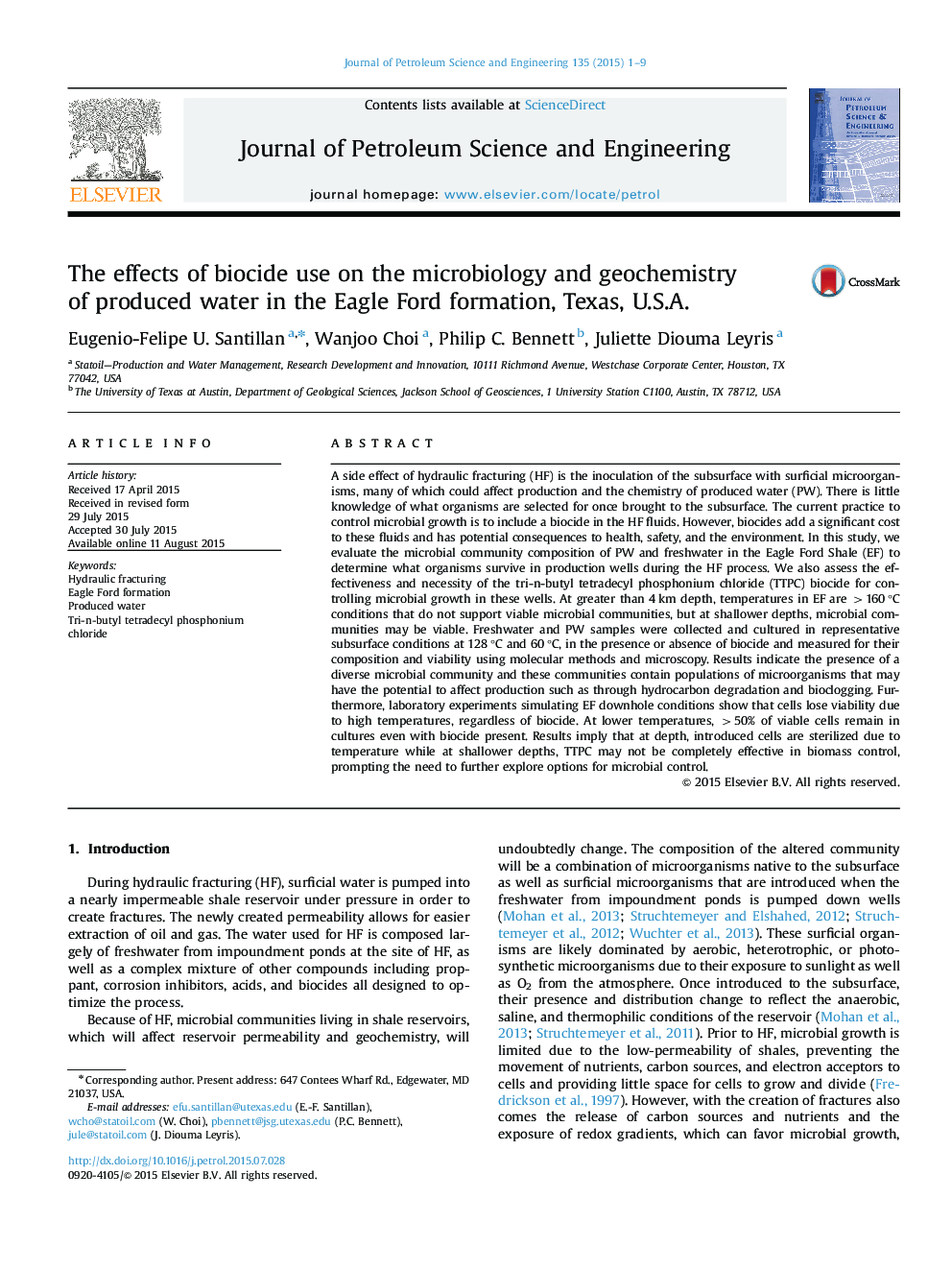| کد مقاله | کد نشریه | سال انتشار | مقاله انگلیسی | نسخه تمام متن |
|---|---|---|---|---|
| 8126304 | 1522806 | 2015 | 9 صفحه PDF | دانلود رایگان |
عنوان انگلیسی مقاله ISI
The effects of biocide use on the microbiology and geochemistry of produced water in the Eagle Ford formation, Texas, U.S.A.
دانلود مقاله + سفارش ترجمه
دانلود مقاله ISI انگلیسی
رایگان برای ایرانیان
موضوعات مرتبط
مهندسی و علوم پایه
علوم زمین و سیارات
زمین شناسی اقتصادی
پیش نمایش صفحه اول مقاله

چکیده انگلیسی
A side effect of hydraulic fracturing (HF) is the inoculation of the subsurface with surficial microorganisms, many of which could affect production and the chemistry of produced water (PW). There is little knowledge of what organisms are selected for once brought to the subsurface. The current practice to control microbial growth is to include a biocide in the HF fluids. However, biocides add a significant cost to these fluids and has potential consequences to health, safety, and the environment. In this study, we evaluate the microbial community composition of PW and freshwater in the Eagle Ford Shale (EF) to determine what organisms survive in production wells during the HF process. We also assess the effectiveness and necessity of the tri-n-butyl tetradecyl phosphonium chloride (TTPC) biocide for controlling microbial growth in these wells. At greater than 4 km depth, temperatures in EF are >160 °C conditions that do not support viable microbial communities, but at shallower depths, microbial communities may be viable. Freshwater and PW samples were collected and cultured in representative subsurface conditions at 128 °C and 60 °C, in the presence or absence of biocide and measured for their composition and viability using molecular methods and microscopy. Results indicate the presence of a diverse microbial community and these communities contain populations of microorganisms that may have the potential to affect production such as through hydrocarbon degradation and bioclogging. Furthermore, laboratory experiments simulating EF downhole conditions show that cells lose viability due to high temperatures, regardless of biocide. At lower temperatures, >50% of viable cells remain in cultures even with biocide present. Results imply that at depth, introduced cells are sterilized due to temperature while at shallower depths, TTPC may not be completely effective in biomass control, prompting the need to further explore options for microbial control.
ناشر
Database: Elsevier - ScienceDirect (ساینس دایرکت)
Journal: Journal of Petroleum Science and Engineering - Volume 135, November 2015, Pages 1-9
Journal: Journal of Petroleum Science and Engineering - Volume 135, November 2015, Pages 1-9
نویسندگان
Eugenio-Felipe U. Santillan, Wanjoo Choi, Philip C. Bennett, Juliette Diouma Leyris,